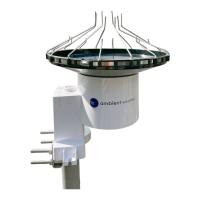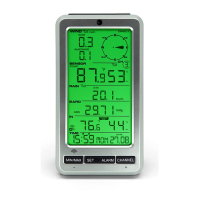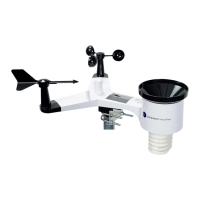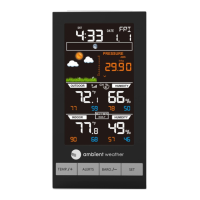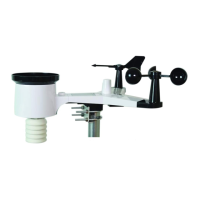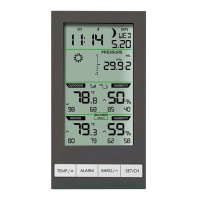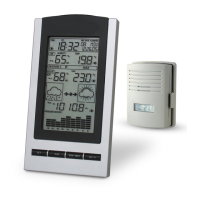Version 1.10 ©Copyright 2020, Ambient LLC. All Rights Reserved. Page 15
5. Insert two AA batteries.
6. Verify the correct channel number (CH) and temperature units of measure (°F vs. °C) are on the display, as
shown in Figure 19.
Figure 19
(1) temperature
(2) temperature units (°F vs. °C)
(3) channel number
(4) relative humidity
7. Close the battery door.
8. Repeat for the additional remote transmitters, verifying each remote is on a different channel.
5.8 PM2.5 Air Quality Sensor (optional)
The WS-5000 supports one indoor (PM25IN) and one outdoor (PM25) PM2.5 Air Quality sensors. For more
information, please visit:
https://ambientweather.net/product/pm25
5.9 Sensor Placement
It is recommended you mount the remote sensor outside on a north facing wall, in a shaded area, at a height at or above
the receiver. If a north facing wall is not possible, choose a shaded area, under an eve.
Direct sunlight and radiant heat sources will result in inaccurate temperature readings. Although the sensor is
weatherproof, it is best to mount in a well-protected area, such as an eve.
1. Use a screw or nail to affix the remote sensor to the wall, as shown in Error! Reference source not found.0.
2. Hang the remote sensor up on string, as shown in Figure 19.
Note: Make sure the sensor is mounted vertically and not lying down on a flat surface. This will insure optimum
reception. Wireless signals are impacted by distance, interference (other weather stations, wireless phones, wireless
routers, TVs and computer monitors), and transmission barriers, such as walls. In general, wireless signals will not
penetrate solid metal and earth (down a hill, for example).
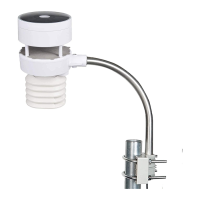
